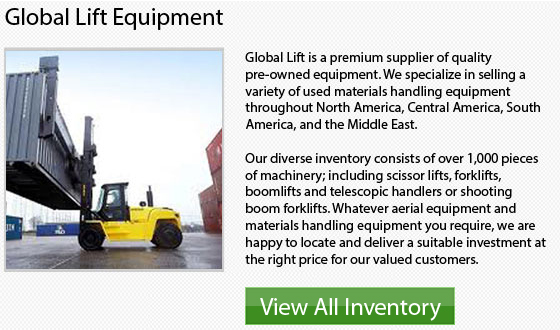
There are 7 different classifications of forklifts as determined by the Industrial Truck Association or ITA. These classifications are broken down by the kind of work setting; smooth or rough surfaces, outdoors, indoors and narrow aisle; by the kind of engine; whether the operator is standing or sitting down; and finally the characteristics of the machine, regarding the maximum grade and tire type. Several of the classes are further sub-divided by operating characteristics. Below are the following lift truck categories:
Class 1 Forklifts: are considered to be electric motor trucks with pneumatic or air filled tires or cushion tires. The Class 1 lift trucks also comprise 4 lift codes, or subcategories that are:
Lift Code 1: Counterbalanced, stand up rider units.
Lift Code 4: Sit down, 3-Wheel electric.
Lift Code 5: Cushion Tire sit down, counterbalanced rider
Lift Code 6: Includes pneumatic tire units, sit-down rider, and counterbalanced rider.
Category 2 Forklifts: Class 2 lift trucks narrow aisle trucks with electric motors and solid tires.
Category 3 Forklifts: The class 3 lift truck would include all hand/rider trucks electric and fuel based with solid tires.
Class 4 Forklifts: The IC or internal combustion models make up Class 4 forklifts. These are sit down rider units with cushion tires. Generally, they are suitable for applications on hard surfaces and indoor application.
Class 5 Forklifts: Class 5 is Internal Combustion Engine sit down rider forklifts equipped with pneumatic tires. Normally, these units are ideal for working areas with significant inclines or on rough surfaces outdoors.
Category 6 Forklifts: Class 6 lift trucks will consist of IC powered or electric units. These ride-on units could tow at least 1000 lbs. This class is engineered and designed to tow loads rather than lift it.
Class 7 Forklifts: Class 7 only included rough terrain units with pneumatic tires. The Class 7 forklifts are almost exclusively used outside and powered by diesel engines.
The various classifications of lift trucks help to keep them organized and separated. Different types of working environments rely on different classifications in order to get their work completed. Forklifts are rather specific in their lifting and loading capacities. Their various engine types and tire types are made for particular applications. To be able to choose the right forklift to fulfill your jobs and to meet all your requirements, do some research to determine exactly what you will require from your particular model. By speaking to some trustworthy dealers and making time to explore your options, you can choose the right equipment.